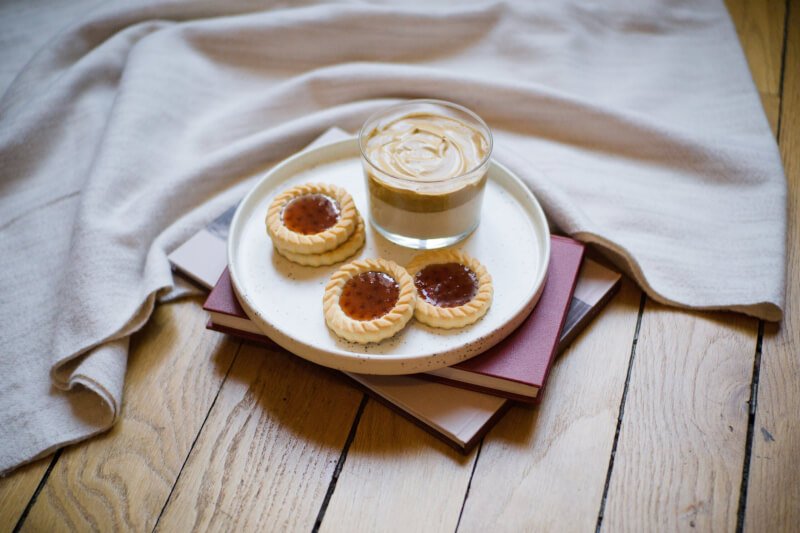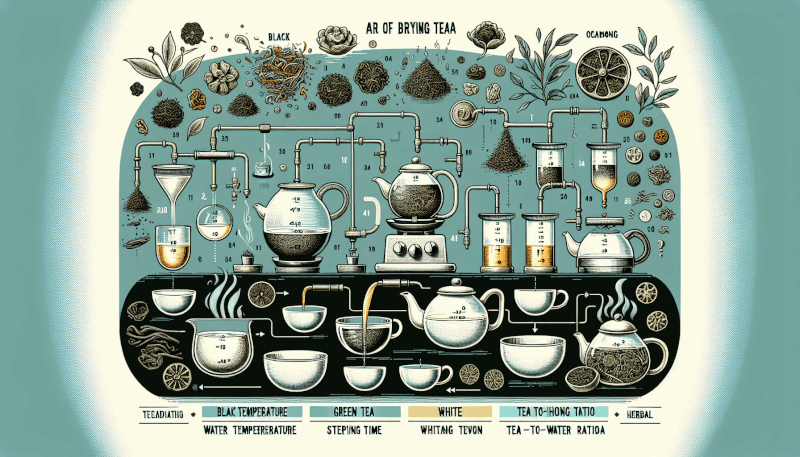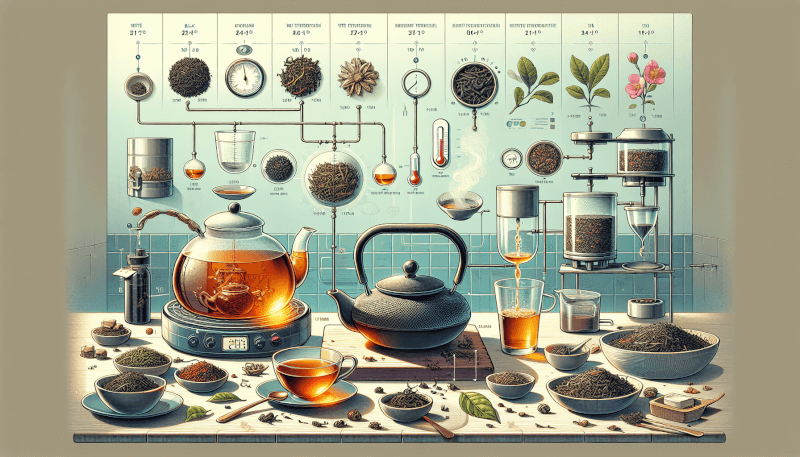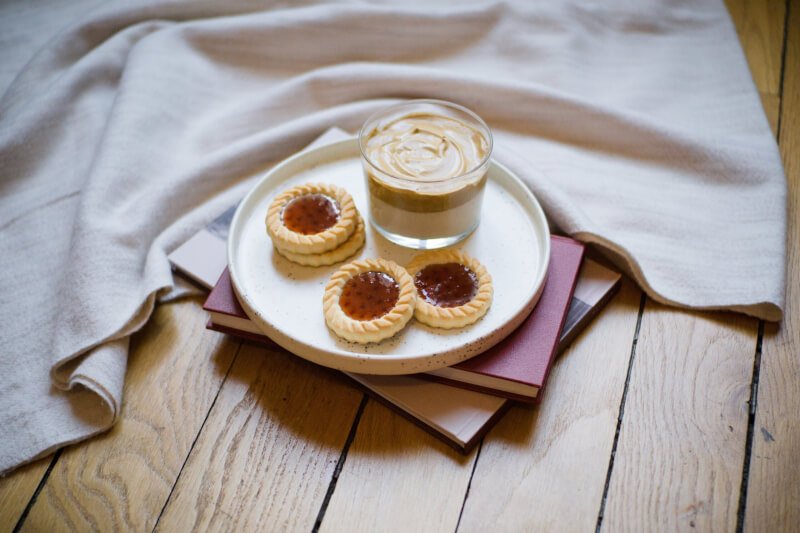Today, you are about to embark on a journey of exploration into the world of tea brewing. In this article, we will unveil the best brewing techniques specifically tailored to different tea types. Whether you are a seasoned tea enthusiast or simply looking to elevate your tea-drinking experience, this guide will provide you with valuable insights and tips on how to infuse each cup with the perfect balance of flavor, aroma, and color. Prepare to immerse yourself in the art of tea brewing and discover the delights that each tea type has to offer.

Black Tea
Black tea is one of the most popular types of tea around the world. It is known for its rich and bold flavor, making it a great choice for those who prefer a robust and invigorating cup of tea. There are several varieties of black tea, each with its own unique characteristics and brewing techniques.
Assam Tea
Assam tea is a type of black tea that originates from the Assam region in India. It is known for its strong and malty flavor, which is perfect for those who enjoy a bold and full-bodied cup of tea. To brew Assam tea, start by boiling water and pouring it over the tea leaves in a teapot or tea infuser. Let the tea steep for about 3-5 minutes, or until it reaches your desired strength. Serve hot with milk or sugar, if desired, for a classic cup of Assam tea.
Darjeeling Tea
Darjeeling tea is a black tea that comes from the Darjeeling district in India. It is often referred to as the “champagne of teas” due to its delicate and floral flavor. To brew Darjeeling tea, use water that is just below boiling point. Steep the tea leaves for about 2-3 minutes to bring out its subtle flavors. Avoid adding milk or sugar to fully appreciate the nuances of Darjeeling tea.
Earl Grey Tea
Earl Grey tea is a black tea infused with the aromatic oil of bergamot, a type of citrus fruit. It has a distinctive and refreshing flavor that is loved by many tea drinkers. To brew Earl Grey tea, start by boiling water and pouring it over the tea leaves. Let it steep for about 3-4 minutes. Earl Grey tea is often enjoyed with a splash of milk or a slice of lemon to enhance its citrus notes.
English Breakfast Tea
English Breakfast tea is a blend of various black teas, including Assam, Ceylon, and Kenyan teas. It is a robust and full-bodied tea, traditionally enjoyed in the morning with breakfast. To brew English Breakfast tea, use water that has just reached boiling point. Allow the tea leaves to steep for about 4-5 minutes for a strong and flavorful cup of tea. Serve it plain or with milk and sugar to your taste.
Green Tea
Green tea is a type of tea that is unoxidized, resulting in a lighter flavor and color compared to black tea. It is known for its health benefits and delicate taste. There are several varieties of green tea, each with its own unique flavors and brewing techniques.
Sencha Tea
Sencha tea is a type of Japanese green tea that is rich in antioxidants and has a grassy flavor. To brew Sencha tea, use water that is around 175°F (80°C) in temperature. Steep the tea leaves for about 1-2 minutes for a light and refreshing cup of Sencha tea. Experiment with steeping times to adjust the strength of the tea to your preference.
Matcha Tea
Matcha tea is a finely ground powdered green tea that is popular in Japanese tea ceremonies. It has a vibrant green color and a smooth, creamy taste. To prepare Matcha tea, use a bamboo whisk to mix the powdered tea with hot water. Whisk until frothy and enjoy the unique and invigorating flavor of Matcha tea.
Jasmine Tea
Jasmine tea is a type of green tea that is scented with jasmine flowers, resulting in a fragrant and floral flavor. To brew Jasmine tea, start by preheating your teapot or cup with hot water. Add the tea leaves and pour hot water over them. Steep for about 2-3 minutes to allow the jasmine aroma to infuse into the tea leaves. Strain and enjoy the delicate and soothing taste of Jasmine tea.
White Tea
White tea is the least processed type of tea, made from young tea leaves and buds. It is known for its subtle flavors and delicate aroma. There are several varieties of white tea, each with their own unique characteristics and brewing techniques.
Silver Needle Tea
Silver Needle tea is one of the most prized and delicate varieties of white tea. It is made from the unopened tea buds and has a subtle and slightly sweet flavor. To brew Silver Needle tea, use water that is around 175°F (80°C) in temperature. Steep the tea leaves for about 3-4 minutes to bring out its delicate flavors. Avoid adding milk or sugar to fully appreciate the natural taste of Silver Needle tea.
White Peony Tea
White Peony tea is made from both tea buds and young leaves, resulting in a slightly stronger flavor compared to Silver Needle tea. It has a fruity and floral taste that is both refreshing and soothing. To brew White Peony tea, use water that is around 175-185°F (80-85°C) in temperature. Steep the tea leaves for about 3-4 minutes and enjoy the subtle flavors of White Peony tea.
Bai Mu Dan Tea
Bai Mu Dan tea, also known as White Peony tea, is a blend of tea buds and larger leaves. It has a mild and sweet flavor with notes of honey and melon. To brew Bai Mu Dan tea, use water that is around 175-185°F (80-85°C) in temperature. Steep the tea leaves for about 3-5 minutes to bring out the full flavors of Bai Mu Dan tea. Enjoy it plain or with a touch of honey for a delicate and refreshing cup of tea.
Oolong Tea
Oolong tea is a partially oxidized tea, offering a unique taste that falls between black and green tea. It is known for its complex flavors and aromas. There are several varieties of Oolong tea, each with its own distinct characteristics and brewing techniques.
Tie Guan Yin Tea
Tie Guan Yin tea, also known as Iron Goddess of Mercy tea, is one of the most famous Oolong teas from China. It has a floral and creamy taste with a hint of roasted notes. To brew Tie Guan Yin tea, use water that is around 195-205°F (90-96°C) in temperature. Steep the tea leaves for about 1-2 minutes for a light and floral cup, or 3-5 minutes for a stronger and more robust flavor.
Dong Ding Tea
Dong Ding tea is a heavily roasted Oolong tea from Taiwan, known for its rich and toasty flavor. To brew Dong Ding tea, use water that is around 195-205°F (90-96°C) in temperature. Steep the tea leaves for about 2-3 minutes for a medium roasted flavor, or 3-5 minutes for a stronger and more intense cup of tea.
Pouchong Tea
Pouchong tea is a lightly oxidized Oolong tea with a fragrant and floral taste. It is a delicate and elegant tea with a subtle sweetness. To brew Pouchong tea, use water that is around 180-190°F (82-88°C) in temperature. Steep the tea leaves for about 1-2 minutes to enjoy its delicate flavors and fragrant aroma. Adjust the steeping time based on your preference for a more intense or lighter cup of Pouchong tea.

Herbal Tea
Herbal tea, also known as tisane, refers to infusions made from herbs, fruits, flowers, or other natural ingredients. It is caffeine-free and offers a wide range of flavors and health benefits. There are numerous herbal teas available, each with their own unique flavors and brewing techniques.
Chamomile Tea
Chamomile tea is a popular herbal tea known for its calming and soothing properties. It has a mild and slightly sweet flavor with floral undertones. To brew chamomile tea, use water that is around 200°F (93°C) in temperature. Steep the tea for about 5 minutes to extract its full flavor. Enjoy chamomile tea before bed to promote relaxation and a restful sleep.
Peppermint Tea
Peppermint tea is a refreshing herbal tea with a cooling and invigorating menthol flavor. It is known for its ability to aid digestion and relieve stomach discomfort. To brew peppermint tea, use water that is around 200°F (93°C) in temperature. Steep the tea for about 3-5 minutes to release its refreshing flavors. Enjoy peppermint tea after a meal or as a refreshing pick-me-up throughout the day.
Hibiscus Tea
Hibiscus tea is a vibrant and tart herbal tea made from the dried petals of the hibiscus flower. It has a tangy and slightly sweet flavor, similar to cranberry juice. To brew hibiscus tea, use water that is around 200°F (93°C) in temperature. Steep the tea for about 5-7 minutes to extract its vibrant red color and bold flavor. Hibiscus tea is delicious both hot and iced, and can be enjoyed on its own or sweetened to taste.
Pu-erh Tea
Pu-erh tea is a type of fermented tea that originates from the Yunnan province in China. It is known for its distinct earthy flavor and aroma. Pu-erh tea can be classified into various types based on the fermentation process and age.
Ripe Pu-erh Tea
Ripe Pu-erh tea, also known as Shou Pu-erh, undergoes a post-fermentation process to accelerate the aging process. It has a smooth and mellow flavor with earthy and woody notes. To brew ripe Pu-erh tea, use water that is around 212°F (100°C) in temperature. Steep the tea for about 2-4 minutes to enjoy its rich and robust flavors. Ripe Pu-erh tea is often enjoyed after meals or as a digestive aid.
Raw Pu-erh Tea
Raw Pu-erh tea, also known as Sheng Pu-erh, is a type of Pu-erh tea that undergoes natural fermentation over time. It has a complex and evolving flavor profile with hints of bitterness and astringency. To brew raw Pu-erh tea, use water that is around 195-205°F (90-96°C) in temperature. Steep the tea for about 3-5 minutes for a light and refreshing cup, or longer for a stronger and more intense flavor. Raw Pu-erh tea can be aged to develop more complex flavors over time.
Aged Pu-erh Tea
Aged Pu-erh tea refers to Pu-erh tea that has undergone extended fermentation and aging. It is known for its smooth and rich flavors, often with notes of earthiness and sweetness. To brew aged Pu-erh tea, use water that is around 195-205°F (90-96°C) in temperature. Steep the tea for about 3-5 minutes to enjoy its deep and complex flavors. Aged Pu-erh tea is highly prized by tea connoisseurs and can be steeped multiple times to fully appreciate its unique qualities.

Rooibos Tea
Rooibos tea, also known as red bush tea, is an herbal tea that comes from the South African plant, Aspalathus linearis. It is naturally caffeine-free and has a sweet and nutty flavor. Rooibos tea offers a range of health benefits and is a popular choice for those seeking a caffeine-free alternative.
Traditional Rooibos Tea
Traditional Rooibos tea undergoes a natural oxidation process, resulting in its distinctive reddish-brown color and sweet flavor. To brew traditional Rooibos tea, use water that is around 200°F (93°C) in temperature. Steep the tea for about 5-7 minutes to extract its full flavor. Traditional Rooibos tea can be enjoyed plain or sweetened with honey or a splash of milk for added richness.
Red Rooibos Tea
Red Rooibos tea is made from the oxidized leaves of the Rooibos plant. It has a robust and full-bodied flavor, often compared to black tea. To brew red Rooibos tea, use water that is around 200°F (93°C) in temperature. Steep the tea for about 5-7 minutes for a bold and flavorful cup. Red Rooibos tea is a great caffeine-free alternative to black tea, perfect for any time of the day.
Green Rooibos Tea
Green Rooibos tea is made from unoxidized Rooibos leaves, resulting in a lighter and fresher flavor compared to traditional Rooibos tea. It is known for its grassy and slightly sweet taste. To brew green Rooibos tea, use water that is around 200°F (93°C) in temperature. Steep the tea for about 3-5 minutes to enjoy its light and refreshing flavors. Green Rooibos tea can be enjoyed hot or iced, perfect for a refreshing summer beverage.
Yellow Tea
Yellow tea is a rare and lightly fermented tea that is highly prized for its delicate flavors and complex production process. It falls between green and white tea, offering a unique and aromatic experience. There are several varieties of yellow tea, each with its own distinct characteristics and brewing techniques.
Junshan Yinzhen Tea
Junshan Yinzhen tea, also known as Junshan Silver Needle tea, is a highly sought-after yellow tea from China. It is made from the tender buds of the tea plant and has a light and sweet flavor. To brew Junshan Yinzhen tea, use water that is around 175-185°F (80-85°C) in temperature. Steep the tea for about 2-3 minutes to enjoy its delicate and refreshing taste. Junshan Yinzhen tea is perfect for those who appreciate nuanced and subtle flavors.
Huoshan Huangya Tea
Huoshan Huangya tea is a yellow tea that comes from the Anhui province in China. It has a mellow and nutty flavor with a hint of sweetness. To brew Huoshan Huangya tea, use water that is around 175-185°F (80-85°C) in temperature. Steep the tea for about 2-3 minutes to bring out its delicate flavors. Huoshan Huangya tea is a wonderful choice for tea enthusiasts looking to explore the world of yellow tea.
Mengding Huangya Tea
Mengding Huangya tea is a rare and prestigious yellow tea from the Sichuan province in China. It is known for its delicate and floral flavor with a hint of chestnut. To brew Mengding Huangya tea, use water that is around 175-185°F (80-85°C) in temperature. Steep the tea for about 2-3 minutes to appreciate its nuanced flavors. Mengding Huangya tea is a true gem for anyone seeking a unique and memorable tea experience.

Fruit Infusions
Fruit infusions, also known as fruit tisanes, are tea-like beverages made from a variety of dried fruits, herbs, and spices. They offer a burst of natural flavors, making them a refreshing and caffeine-free alternative to traditional teas.
Berry Infusion
Berry infusions are made from a diverse range of berries, such as strawberries, raspberries, and blueberries. They have a sweet and tangy flavor that is packed with antioxidants and vitamins. To brew a berry infusion, use boiling water and steep for about 5-7 minutes to extract the full flavors of the fruits. Enjoy it hot or chilled, with or without sweetener, for a delightful and refreshing beverage.
Citrus Infusion
Citrus infusions are made from a combination of citrus fruits, such as oranges, lemons, and grapefruits. They have a bright and zesty flavor that is both invigorating and revitalizing. To brew a citrus infusion, use boiling water and steep for about 3-5 minutes to release the vibrant citrus flavors. Add a touch of honey or a sprig of mint for a refreshing twist.
Tropical Infusion
Tropical infusions are made from a medley of exotic fruits, such as mangoes, pineapples, and papayas. They offer a taste of the tropics with their refreshing and fruity flavors. To brew a tropical infusion, use boiling water and steep for about 5-7 minutes to infuse the flavors of the tropical fruits. Enjoy it hot or iced, and garnish with a slice of fruit for a tropical escape in your teacup.
Iced Tea
Iced tea is a refreshing beverage enjoyed worldwide, particularly during hot summer months. It can be made with various types of tea, offering a wide range of flavors to suit different preferences.
Classic Iced Tea
Classic iced tea is commonly made with black tea, such as Darjeeling or Ceylon tea. It has a crisp and refreshing taste that is perfect for a hot summer day. To make classic iced tea, start by brewing a strong pot of tea using double the amount of tea leaves. Once brewed, let the tea cool and pour over ice. Sweeten to taste and garnish with a slice of lemon or a sprig of mint for a classic and timeless iced tea experience.
Flavored Iced Tea
Flavored iced tea offers a variety of options to cater to different taste preferences. It can be made with any type of tea, whether it’s black, green, or herbal. To make flavored iced tea, simply brew your favorite tea and then add natural flavorings such as fruit slices, herbs, or a splash of fruit juice. Experiment with different combinations to create your own unique and refreshing iced tea creations.
Sparkling Iced Tea
Sparkling iced tea adds a fizzy twist to the traditional iced tea. It can be made with any type of tea and sparkling water or soda water. To make sparkling iced tea, brew your desired tea and let it cool. Add a splash of sparkling water or soda water to the tea, along with sweeteners or flavorings if desired. Pour over ice and enjoy the effervescent and refreshing taste of sparkling iced tea.
In conclusion, there is a vast array of tea types available, each with its own distinct flavors and brewing techniques. Whether you prefer the robustness of black tea, the delicate nuances of green and white tea, the complexity of oolong and Pu-erh tea, the comforting herbal blends, or the refreshing iced tea variations, there is a tea for every palate and occasion. Explore the world of tea and discover your own personal favorites to enjoy a cup of warmth, relaxation, or refreshment. Happy brewing!



